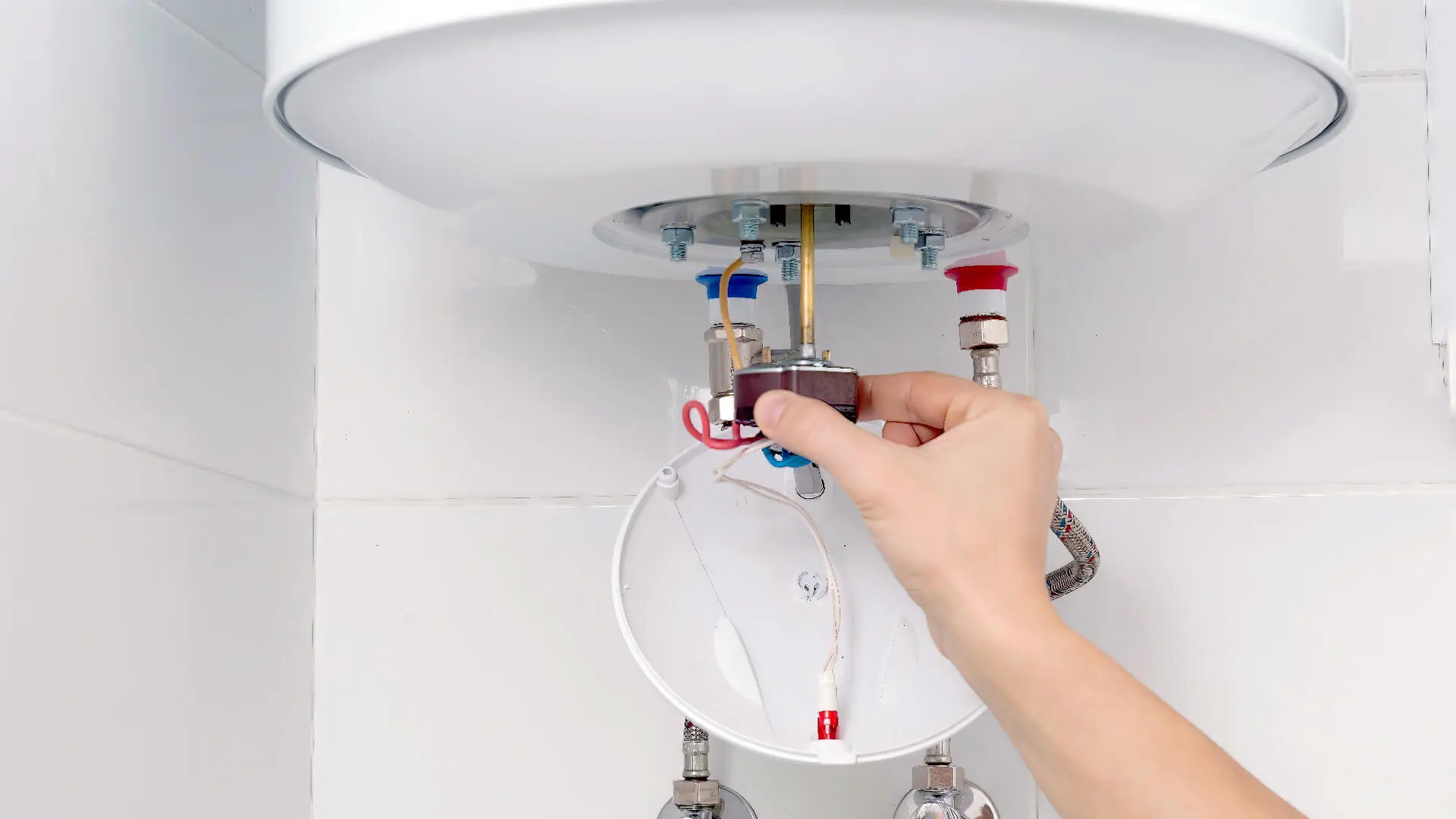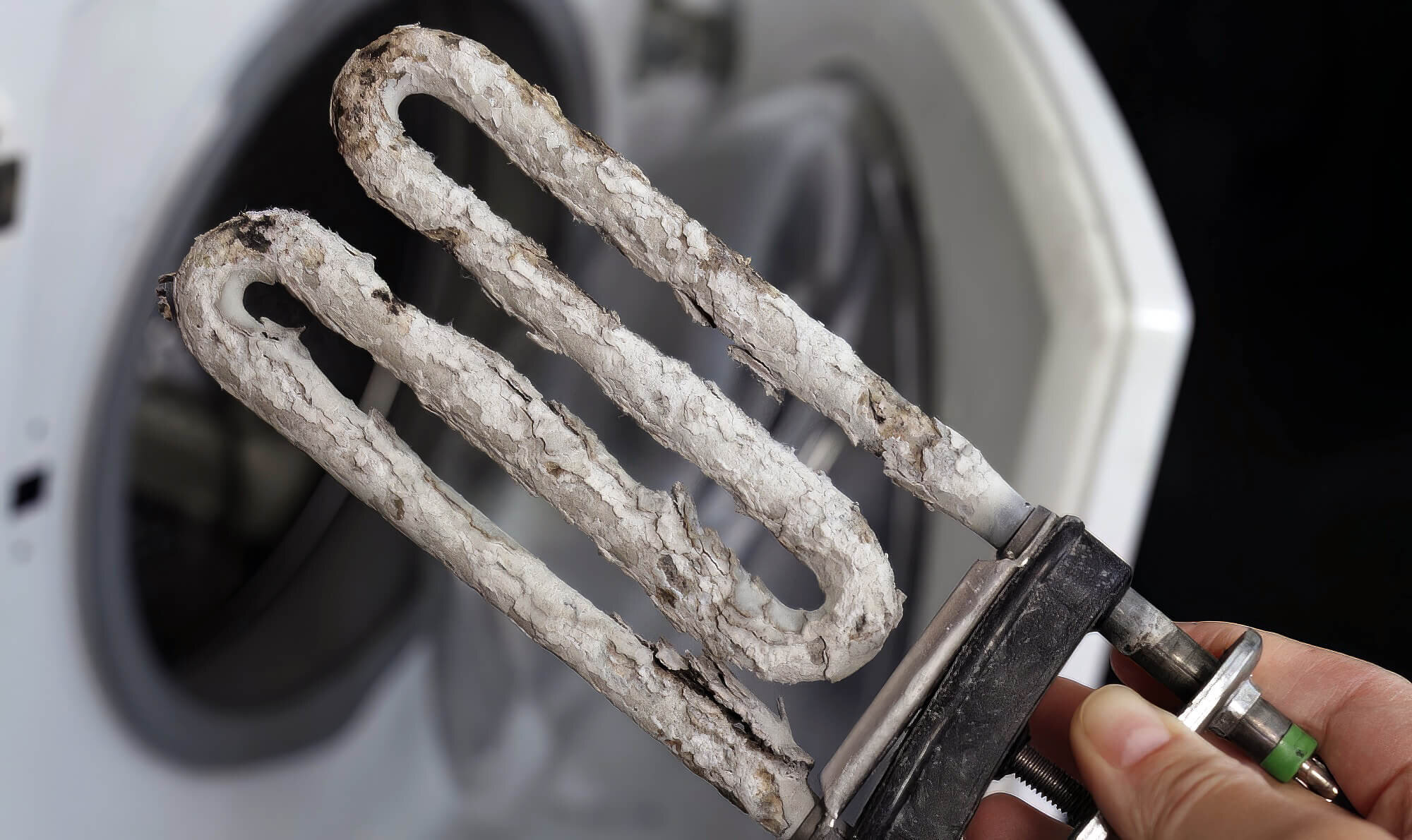There’s no doubt that hot water heaters are extremely useful. However, sometimes they may develop tank scaling, which is annoying.
If you live in an area with hard water, you might notice mineral deposits like calcium and magnesium inside your tank. This buildup, often called limescale, can affect how well your heater works.

Luckily, there’s a straightforward way to tackle this issue, and we’ve covered it in this guide. So, keep reading!
What Are The Symptoms Of Scaling In A Hot Water Tank?
The most obvious symptom of scaling is the deposition of a hard mineral layer inside the tank. You can easily observe the scales if you inspect the tank’s inner walls during this time. If the scales haven’t hardened, the deposit will appear like thick and slimy gunk.
Along with scale buildup, you might notice other signs too. These can be spotted during regular use without needing to take the tank apart. We’ve detailed these signs below for your convenience.
1. Odd Sounds
The emergence of weird noises is one of the most obvious symptoms of tank scaling. You can often hear distinct popping, knocking or rattling sounds inside the hot water tank. These sounds are caused by the water bubbles attempting to escape the tank’s sediment layer.
2. Clogged Pipes
A blocked pipe or drain valve is another clear indicator of water tank scaling. Besides the tank’s inner walls, the mineral residues can also get deposited on the walls of water supply pipes. Over time, the residues keep accumulating inside the pipes, which causes the water pressure to fall. And if enough minerals get deposited in the pipes, they will become completely blocked.

3. Incorrect Water Temperature
When the inner walls of your hot water tank are covered with mineral residues, the water from it will often have an incorrect temperature. This is because the deposits interfere with the heat exchange mechanism of the heater. Because of that, the water cannot pick up the heat effectively, and as a result, you end up with improperly heated water.
4. The Tank Becomes Empty Too Quickly
Another telltale sign of scaling is reduced tank capacity. The buildup of scale and gunk takes up space, meaning the tank empties faster than usual.

How To Descale A Hot Water Tank?
In this section, we have provided a stepwise procedure to clean and descale the tank of your hot water heater. Before starting, you should gather the necessary tools and materials to finish this task without a hitch. The things you will need for this process are:
- Adjustable wrench
- Funnel
- Drainage hose
- White vinegar or any other descaling chemical
- Bucket
- Teflon tape
- Towels
- Screwdriver
With your materials ready, you’re all set to start the descaling process as outlined below.
Step 1: Turn Off The Power And Water Supply
The first thing that you need to do is cut the power to your gas or electric heater. For gas-powered heaters, you can do this by simply turning off the gas valve. And in the case of electric water heaters, you will have to flip the power supply switch and unplug the system. Then, you’ll have to shut down the water supply by turning off the water mains.
Step 2: Drain The Storage Tank
In this step, you must drain out the water stored in the tank. You must first relieve the pressure inside the hot water heater to do that. Using the adjustable wrench, you must pull the pressure regulator carefully until there is a noticeable hissing sound. This indicates the pressure has been released from the tank. You can open a hot water tap to relieve any remaining pressure.
Next, attach the drainage hose and open the tank drain valve near the bottom to empty the water. Using the bucket, you can collect water for household activities. Although this is optional, we strongly recommend doing this to prevent the water from being wasted. And after the drainage process is complete, you’ll have to close the drain valve.
Step 3: Remove The Heating Elements And The Anode Rod
Once the tank is empty, you can access the inner components: the heating element and the sacrificial anode rod. The former helps with the heat exchange process, while the latter is a piece of metal that is included inside the tank to prevent rust formation.
In some models, these components may be shielded by an access panel inside the tank. If that’s the case, you will have to remove the screws of the access panel to reveal them. Then, you will have to remove the anode rod from the tank. Be careful here since the anode rod might be corroded and dangerous.
Step 4: Pour White Vinegar Or A Suitable Descaler
Now, you’ll have to pour one gallon (or more if the tank is large) of white vinegar through the relief valve opening. You can also use commercial-grade descaling chemicals as long as you follow the mixing instructions carefully. Make sure to use a funnel to avoid any spills. Subsequently, let the solution sit inside the tank for an hour or two.
After that, turn on the mains’ cold water line and partially fill the tank. Let this solution sit for a few more hours, then flush it from the tank. If you wish, you can scrub the tank walls with a soft brush, but be gentle to prevent any damage to the inner lining. This should get rid of the scaling inside the walls completely.
Step 5: Reinstall The Components And Fill The Tank
Once the scales have been removed, you should put the anode rod and the heating elements back in place. We suggest using a new anode rod if the old one has become too corroded.
After that, you can tighten the pressure regulator and fill the tank with water. Then, you can restore power to the heater and start using it again. However, we advise you to test it before resuming normal operations to be safe.
Why Should You Descale Your Hot Water Tank?
There are several reasons to descale a hot water tank promptly, and the most obvious one is to ensure the proper functioning of your heater. Besides, it helps to prevent tank corrosion, which ultimately extends the service life of your hot water heater.
Descaling isn’t just about performance—it can save you money too. Scaling interferes with heating, causing your system to use more electricity. By tackling this, you’ll help keep those energy bills in check.
On a side note, the descaling process will enable you to check the condition of your anode rod and heating elements. If you notice any issues, you can repair or replace them simultaneously, which will be highly convenient for the overall maintenance of your heater.
Cleaning and Descaling Your Hot Water Tank
Now, we have arrived at the end of this guide. We hope you will find this information helpful when cleaning your hot water tank.
Of course, there is a way by which you can prevent this problem from popping up altogether. If you install a water softener, you can eliminate the dissolved minerals from hard water. That, in turn, will prevent mineral residues from being deposited inside the tank’s walls.
As you can see, the procedure for descaling a hot water tank is quite easy. But if you are not sure about taking the DIY approach, you can contact us at any time.
Here at Big Blue Plumbing, we have a team of highly skilled plumbers who can complete this job quickly, conveniently, and affordably. So, if you choose us, your hot water system will never return to normal!



